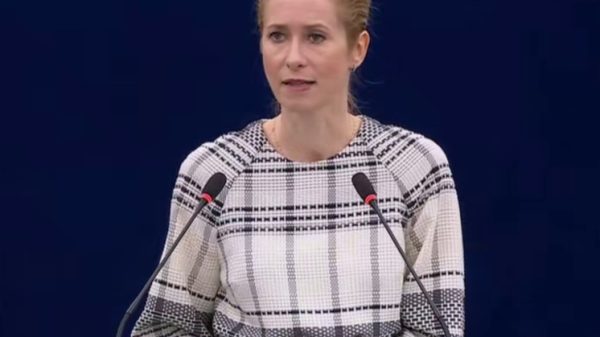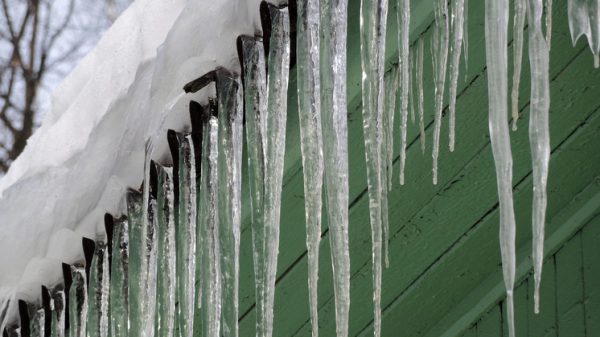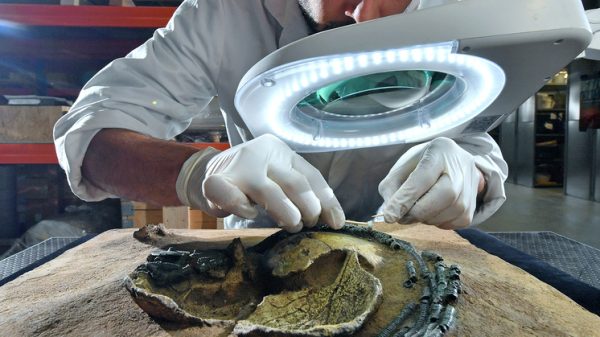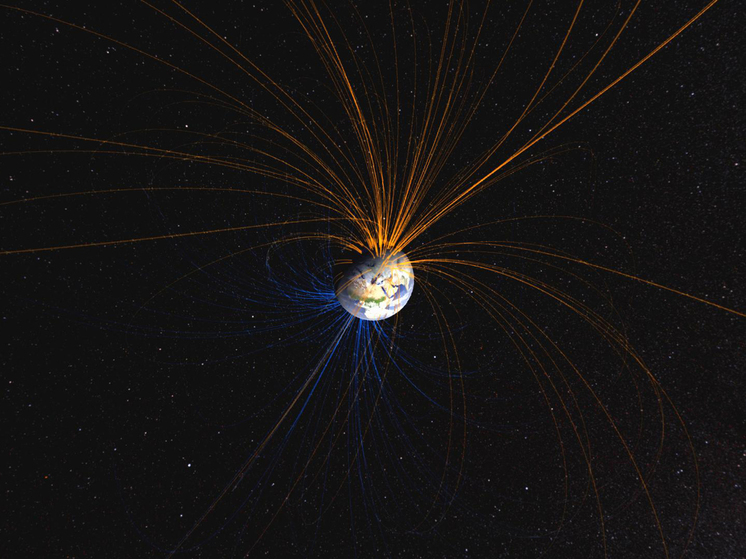Scientists' discovery may resolve many chronological disputes
Ancient bricks made during the reign of the Babylonian king Nebuchadnezzar II absorbed a voltage surge in the Earth's magnetic field, scientists say.
< img src="https://static.mk.ru/upload/entities/2023/12/28/10/articles/detailPicture/30/a4/d2/aa/62767ebc64e18f2646ba4eafddddfcc7.jpg" class="article__picture-image" alt ="The discovery of scientists may resolve many chronological disputes" /> Photo: flickr.com/NASA Goddard Space Flight Center /CC BY 4.0 Deed < p>Thousands of years ago, the Earth's magnetic field experienced a significant surge in the part of the planet that included the ancient kingdom of Mesopotamia. A new study has found that people at the time probably didn't even notice the vibrations, but signs of the anomaly, including previously unknown details, were preserved in the clay bricks they made.
As CNN reports, when scientists recently examined bricks dating back to the third-first millennium BC in Mesopotamia, which covered modern-day Iraq and parts of what are now Syria, Iran and Turkey, they found magnetic traces in bricks from the first millennium, indicating that the bricks were burned at a time when the Earth's magnetic field was strong. was unusually strong. Stamps on bricks with the names of Mesopotamian kings allowed researchers to confirm the time range of the magnetic surge.
Their findings were consistent with a famous magnetic spike called the “Levantine Iron Age geomagnetic anomaly,” which occurred between 1050 and 550 BC. This has previously been documented in artifacts from the Azores, Bulgaria and China using archaeomagnetic analysis — studying grains in pottery and archaeological objects for clues about the Earth's magnetic activity, scientists reported Dec. 18 in the journal Proceedings of the National Academy of Sciences.
«It's really interesting that ancient artifacts from Mesopotamia help explain and record key events in Earth's history, such as fluctuations in the magnetic field,» said study co-author Mark Altavil, professor of Middle Eastern archeology and archaeological data science at the Institute of Archaeology, University College London.
“This shows why preserving the ancient heritage of Mesopotamia is important for science and humanity as a whole,” Altavil explained in comments to CNN.
When an ancient artifact contains organic matter, such as bone or wood, scientists can find out how old it is using radiocarbon dating, which compares decay rates preserved in carbon isotopes. But for inorganic artifacts — pottery or ceramic objects — Archaeomagnetic analysis is needed to determine their age, said lead study author Matthew Howland, assistant professor of anthropology at Wichita State University in Kansas.
Because pottery is the most common type of artifact at archaeological sites around the world, this technique is a vital complement to radiocarbon dating, Howland tells CNN.
«Archaeomagnetic dating can be applied to any kind of magnetically sensitive material that has been heated,» Howland said. And its usefulness extends beyond archaeology. Geologists often use rock analysis to study the Earth's magnetic fields, but in more recent times, when it is not possible to study very fresh rocks because they have not yet had time to form, we need to use archaeological artifacts. We can think of clay bricks or pottery as stones created by man to study the Earth's magnetic fields.
Until this new study, there was little definitive archaeomagnetic evidence for Mesopotamian artifacts dating from this time.
«The lack of data there has really limited our ability to understand the Earth's magnetic field conditions in that region,» Howland said. It also meant that archaeologists could not accurately calculate the age of many sites in Mesopotamia, «an incredibly important region in world archaeology.»
The Earth is surrounded by a magnetosphere — an invisible bubble of magnetism created by the powerful churning of molten metals in the Earth's core, CNN explains. This prevents our atmosphere from being destroyed by solar winds that blow it away from the Sun. While the magnetosphere has been continuously present for billions of years, its strength waxes and wanes over time. (According to the US Geological Survey, fluctuations in the magnetic field do not directly affect human health.)
Clay artifacts that have been fired at high temperatures retain a “imprint” terrestrial magnetism of the time in minerals such as iron oxide exposed to magnetism. Obtaining this fingerprint involves a series of magnetic experiments in which the object is repeatedly heated and cooled by exposing it to magnetic fields and then removing them. This process creates a series of new fingerprints that are compared to the object's original magnetic intensity.
Scientists can then match the object to a specific period of activity in the Earth's magnetic field.
“Overall, this is exciting work because it helps us understand what the Earth's magnetic field does over time, and it will also help us determine the age of artifacts, which would otherwise be impossible,” says Kaue Borlina, a graduate student in the Department of Earth Sciences. Earth and Planets from Johns Hopkins University.
“Most importantly, these high-resolution recordings are critical to understanding how magnetic bursts on the surface may be related to what is happening inside the Earth, explains Borlina. – Especially in the outer core, where the Earth's magnetic field is generated.
The new analysis not only filled an important data gap — it also revealed new clues about a magnetic anomaly from that period.
Of the 32 bricks the researchers studied, five were stamped with marks linking them to the reign of Nebuchadnezzar II, between 604 and 562 BC. Measurements of the magnetism of the stones showed that the magnetic field was rapidly and intensely intensified during the making of the bricks. Thus, the stamps on the bricks created a snapshot of a burst of magnetic energy that lasted only a few decades.
“The next steps are to continue this work, apply it to more clay bricks from Mesopotamia, and further refine the curve. which we can obtain to determine the strength of the Earth's magnetic field over time,» explains Howland.
“But perhaps even more exciting is that archaeologists working on excavations in Iraq and Syria can look at our data and apply the same methods to undated artifacts,” he added. — This may help resolve many chronological disputes that occur in the region about the chronology of the kings”.





















































Свежие комментарии